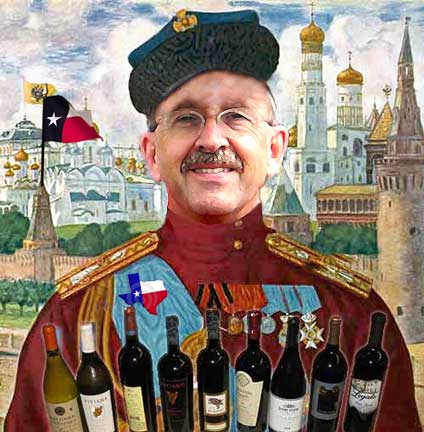Texas Wine Czar Says, “The Best Texas Wines Will Be in the Style and Tradition of Europe”
My wife and I celebrated our 26th wedding anniversary last night at Rainbow Lodge in Houston. While we talked, we reminisced and savored our past travels, tribulations and personal triumphs while we also savored a valuable wine tasting experience.
I perused the Rainbow Lodge wine list and came on a page titled “Fun Wines” and found an interesting and value selection. It was a nearly decade old Quinta Das Maias 2001 from the Dao region of Portugal. When released this wine sold for $18, but on the wine list, it was offered for a meager $35. At this price, and with 10 years of bottle age, what a steal!
The Quinta Das Maias showed the typical red-black color and dark fruit essence along with a host of earthy, minerally and steely characteristics found in wines rich in Touriga Nacional from the Dao region.
It brought back memories of the pre-release tasting of Sandstone Cellars VII 2009 (100% Mason County Texas Touriga Nacional) that I did earlier this year [See https://vintagetexas.com/?p=2736]. At that time, having already visited Portugal and experienced the wines of Dao personally, my mind wandered a bit. I thought, what will the Sandstone Cellars VII be like in a decade. Well, this is as close to it I think I will get unless I can make myself pigeonhole a few bottles away for another nine years.
At the time of its release, the Quinta Das Maias was rated in the 89-90 range by several major reviewers of European wines. It was described as having low alcohol content (12.5%) yet offering great power and drinkability. It was described as a food friendly wine at a time when this word was just being bantered about. The years have done this wine well. The reason why I think that I can compare the Quinta Das Maias and the Sandstone Cellars VII is that the Sandstone Cellars VII also has lower alcohol (13.1%) than many of the overblown new world wines exhibit that try unsuccessfully to emulate their European counterparts.
Hear me out. This tasting made me realize something that needs saying….
“Going forward, the best Texas wines will be cast in the European style and tradition.”
This is something that might surprise many wine drinkers that have been raised on big alcoholic fruit bomb wines of California (Cabernet, Merlot, Chardonnay and even Pinot Noirs with >14% alcohol) and the wines of the USA and he world that have since tried to copy this style rather than focus on what their own terroir offers [square peg vs. round hole syndrome]. Many of the finer wines of Europe come in at 12 to 13.5% alcohol and end up offering a more balanced wine drinking experience that allows the local terroir to present itself in combination with the fruit rather than being masked by the fruit. When the terroir and fruit are in balance, it makes for a much more interesting and varied wine tasting experience.
How will this play in a wine marketing and distribution system that is still demanding Texas winemakers emulate California even though Texas winegrowers and winemakers are not going to be able to deliver a consistent product in the California style?
How is this going to play with wine consumers, many of who have been hammered into a one-wine-style-fits-all approach to wine buying and limited to the standard California set of Cabernet, Merlot, Chardonnay, Sauvignon Blanc, Pinot Noir on their local market wine shelves [again….square peg vs. round hole syndrome]?
We are in for a Texas wine train wreck of great proportions unless both the people that consume wine and those in the industry that distribute and sell wine finally realize that Texas ain’t California and will never be. But, that’s not a bad thing. Texas can offer a different kind of wine experience and something that we can be proud to support. For best results, the Texas wines need to rely on grape varietals that really “like” and “want” to grow here, those that can be economically and sustainably farmed, and those that will ultimately provide the highest quality glasses of wines possible.
We need to keep foremost in our minds the wines of southern Europe (southern France, Spain, Italy and Sardinia) that rely on grapes like Viognier, Vermentino, Roussanne, Trebbiano and Muscat for their whites and Tempranillo, Syrah, Grenache, Dolcetto, Aglianico, Nero D’Avola and, oh yes, even Touriga Nacional for their reds.
— — — — —
UPDATE: See what Jancis Robinson says about the top ten (or twelve) varietal Touriga Nacional wines from a tasting in Portugal: http://www.jancisrobinson.com/articles/a201012162.html


Your point is well taken, Russ, and I don’t think it’s a surprise to anyone in Texas who is making wine and paying attention. The growing season here is what, six or eight weeks shorter than in California? That’s going to make all the difference in the world in terms of style. The best Texas wines have already demonstrated that.
Jeff,
I guess that we just need to get more people to be passionate about the subject and be able and willing to vocalize it in all forums (in the markets, restaurants, wine bars, wineries). We don’t want to be to be the square peg in the round hole.
Thanks for the comment.
Russ